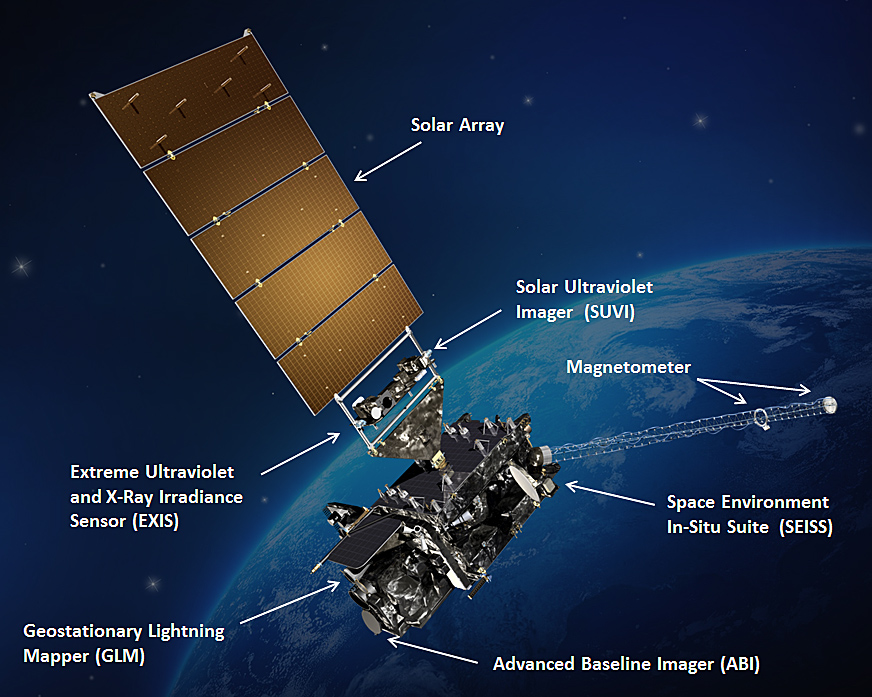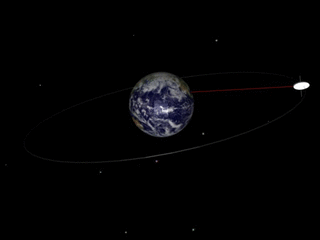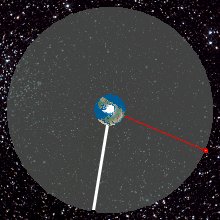|
INSAT-3DS
INSAT-3DS is an Indian meteorological satellite built by the Indian Space Research Organisation (ISRO). The satellite is a follow on of INSAT-3DR mission. The satellite was launched on 17 February 2024 at 17:35 IST from the Satish Dhawan Space Centre. Satellite Payloads Launch The INSAT-3DS satellite was initially planned to be launched in January 2024 but was later delayed to February. The satellite was launched via the GSLV-F14 rocket on 17 February 2024 at 17:35 IST (12:05 UTC). This was the first time the extended version of Cryogenic upper stage of the GSLV rocket, CUS-15 was flown with environment friendly white fairing. Five days later, all four planned Liquid Apogee Motor (LAM) firings were completed. The spacecraft is now in the geosynchronous orbit A geosynchronous orbit (sometimes abbreviated GSO) is an Earth-centered orbit with an orbital period that matches Earth's rotation on its axis, 23 hours, 56 minutes, and 4 seconds (one sidereal day). The s ... [...More Info...] [...Related Items...] OR: [Wikipedia] [Google] [Baidu] |
GSLV
Geosynchronous Satellite Launch Vehicle (GSLV) is a class of expendable launch systems operated by the Indian Space Research Organisation (ISRO). GSLV has been used in fifteen launches since 2001. History The Geosynchronous Satellite Launch Vehicle (GSLV) project was initiated in 1990 with the objective of acquiring an Indian launch capability for geosynchronous satellites. GSLV uses major components that are already proven in the Polar Satellite Launch Vehicle (PSLV) launch vehicles in the form of the S125/S139 solid rocket booster and the liquid-fueled Vikas engine. Due to the thrust required for injecting the satellite in a geostationary transfer orbit (GTO) the third stage was to be powered by a LOX/ LH2 Cryogenic engine which at that time India did not possess or have the technological expertise to build. The aerodynamic characterization research was conducted at the National Aerospace Laboratories' 1.2m Trisonic Wind Tunnel Facility. The first development flight ... [...More Info...] [...Related Items...] OR: [Wikipedia] [Google] [Baidu] |
Geosynchronous Satellite Launch Vehicle
Geosynchronous Satellite Launch Vehicle (GSLV) is a class of expendable launch systems operated by the ISRO, Indian Space Research Organisation (ISRO). GSLV has been used in List of GSLV launches, fifteen launches since 2001. History The Geosynchronous Satellite Launch Vehicle (GSLV) project was initiated in 1990 with the objective of acquiring an Indian launch capability for geosynchronous satellites. GSLV uses major components that are already proven in the Polar Satellite Launch Vehicle (PSLV) launch vehicles in the form of the S125/S139 solid rocket booster and the Liquid-propellant rocket, liquid-fueled Vikas (rocket engine), Vikas engine. Due to the thrust required for injecting the satellite in a geostationary transfer orbit (GTO) the third stage was to be powered by a LOX/LH2, LH2 Cryogenic engine which at that time India did not possess or have the technological expertise to build. The aerodynamic characterization research was conducted at the National Aerospace Labo ... [...More Info...] [...Related Items...] OR: [Wikipedia] [Google] [Baidu] |
INSAT
The Indian National Satellite System or INSAT, is a series of multipurpose geostationary satellites launched by the Indian Space Research Organisation (ISRO) to satisfy telecommunications, broadcasting, meteorology, and search and rescue operations. Commissioned in 1983, INSAT is the largest domestic communication system in the Indo-Pacific Region. It is a joint venture of the Department of Space, Department of Telecommunications, India Meteorological Department, All India Radio and Doordarshan. The overall coordination and management of INSAT system rests with the Secretary-level INSAT Coordination Committee. INSAT satellites provide transponders in various bands to serve the television and communication needs of India. Some of the satellites also have the Very High Resolution Radiometer (VHRR), CCD cameras for meteorological imaging. The satellites also incorporate transponder(s) for receiving distress alert signals for search and rescue missions in the South Asian and I ... [...More Info...] [...Related Items...] OR: [Wikipedia] [Google] [Baidu] |
INSAT-3DR
INSAT-3DR is an Indian weather satellite built by the Indian Space Research Organisation and operated by the Indian National Satellite System. It will provide meteorological services to India using a 6-channel imager and a 19-channel sounder, as well as search and rescue information and message relay for terrestrial data collection platforms. The satellite was launched on 8 September 2016, and is a follow-up to INSAT-3D. Satellite payload Launch INSAT-3DR was successfully launched on 8 September 2016 at 11:20 UTC aboard a Geosynchronous Satellite Launch Vehicle (GSLV Mk II) from the Satish Dhawan Space Centre, which was delayed from 28 August. The rocket placed it into a geostationary transfer orbit for eventual stationing in geosynchronous orbit A geosynchronous orbit (sometimes abbreviated GSO) is an Earth-centered orbit with an orbital period that matches Earth's rotation on its axis, 23 hours, 56 minutes, and 4 seconds (one sidereal day). The synchronization o ... [...More Info...] [...Related Items...] OR: [Wikipedia] [Google] [Baidu] |
Weather Satellite
A weather satellite or meteorological satellite is a type of Earth observation satellite that is primarily used to monitor the weather and climate of the Earth. Satellites are mainly of two types: polar orbiting (covering the entire Earth asynchronously) or geostationary (hovering over the same spot on the equator). While primarily used to detect the development and movement of storm systems and other cloud patterns, meteorological satellites can also detect other phenomena such as city lights, fires, effects of pollution, auroras, sand and dust storms, snow cover, ice mapping, boundaries of ocean currents, and energy flows. Other types of environmental information are collected using weather satellites. Weather satellite images helped in monitoring the volcanic ash cloud from Mount St. Helens and activity from other volcanoes such as Mount Etna. Smoke from fires in the western United States such as Colorado and Utah have also been monitored. El Niño and its effects on wea ... [...More Info...] [...Related Items...] OR: [Wikipedia] [Google] [Baidu] |
Weather Satellites Of India
Weather is the state of the atmosphere, describing for example the degree to which it is hot or cold, wet or dry, calm or stormy, clear or cloudy. On Earth, most weather phenomena occur in the lowest layer of the planet's atmosphere, the troposphere, just below the stratosphere. Weather refers to day-to-day temperature, precipitation, and other atmospheric conditions, whereas climate is the term for the averaging of atmospheric conditions over longer periods of time. When used without qualification, "weather" is generally understood to mean the weather of Earth. Weather is driven by air pressure, temperature, and moisture differences between one place and another. These differences can occur due to the Sun's angle at any particular spot, which varies with latitude. The strong temperature contrast between polar and tropical air gives rise to the largest scale atmospheric circulations: the Hadley cell, the Ferrel cell, the polar cell, and the jet stream. Weather systems in ... [...More Info...] [...Related Items...] OR: [Wikipedia] [Google] [Baidu] |
Geosynchronous Orbit
A geosynchronous orbit (sometimes abbreviated GSO) is an Earth-centered orbit with an orbital period that matches Earth's rotation on its axis, 23 hours, 56 minutes, and 4 seconds (one sidereal day). The synchronization of rotation and orbital period means that, for an observer on Earth's surface, an object in geosynchronous orbit returns to exactly the same position in the sky after a period of one sidereal day. Over the course of a day, the object's position in the sky may remain still or trace out a path, typically in a figure-8 form, whose precise characteristics depend on the orbit's inclination and eccentricity. A circular geosynchronous orbit has a constant altitude of . A special case of geosynchronous orbit is the geostationary orbit (often abbreviated ''GEO''), which is a circular geosynchronous orbit in Earth's equatorial plane with both inclination and eccentricity equal to 0. A satellite in a geostationary orbit remains in the same position in the sky to observers ... [...More Info...] [...Related Items...] OR: [Wikipedia] [Google] [Baidu] |
Meteorological Satellite
A weather satellite or meteorological satellite is a type of Earth observation satellite that is primarily used to monitor the weather and climate of the Earth. Satellites are mainly of two types: polar orbiting (covering the entire Earth asynchronously) or geostationary (hovering over the same spot on the equator). While primarily used to detect the development and movement of storm systems and other cloud patterns, meteorological satellites can also detect other phenomena such as city lights, fires, effects of pollution, auroras, sand and dust storms, snow cover, ice mapping, boundaries of ocean currents, and energy flows. Other types of environmental information are collected using weather satellites. Weather satellite images helped in monitoring the volcanic ash cloud from Mount St. Helens and activity from other volcanoes such as Mount Etna. Smoke from fires in the western United States such as Colorado and Utah have also been monitored. El Niño and its effects on weat ... [...More Info...] [...Related Items...] OR: [Wikipedia] [Google] [Baidu] |
Geostationary Orbit
A geostationary orbit, also referred to as a geosynchronous equatorial orbit''Geostationary orbit'' and ''Geosynchronous (equatorial) orbit'' are used somewhat interchangeably in sources. (GEO), is a circular orbit, circular geosynchronous orbit in altitude above Earth's equator, in radius from Earth's center, and following the retrograde and prograde motion, direction of Earth's rotation. An object in such an orbit has an orbital period equal to Earth's rotational period, one sidereal time, sidereal day, and so to ground observers it appears motionless, in a fixed position in the sky. The concept of a geostationary orbit was popularised by the science fiction writer Arthur C. Clarke in the 1940s as a way to revolutionise telecommunications, and the first satellite to be placed in this kind of orbit was launched in 1963. Communications satellites are often placed in a geostationary orbit so that Earth-based satellite dish, satellite antennas do not have to rotate to track t ... [...More Info...] [...Related Items...] OR: [Wikipedia] [Google] [Baidu] |
Indian Space Research Organisation
The Indian Space Research Organisation (ISRO ) is India's national List of government space agencies, space agency, headquartered in Bengaluru, Karnataka. It serves as the principal research and development arm of the Department of Space (DoS), overseen by the Prime Minister of India, with the Chairperson of the Indian Space Research Organisation, Chairman of ISRO also serving as the chief executive of the DoS. It is primarily responsible for space-based operations, space exploration, international space cooperation and the development of related technologies. The agency maintains a constellation of Earth observation satellite, imaging, Communications satellite, communications and remote sensing satellites. It operates the GPS-aided GEO augmented navigation, GAGAN and Indian Regional Navigation Satellite System, IRNSS satellite navigation systems. It has sent Chandrayaan programme, three missions to the Moon and Mars Orbiter Mission, one mission to Mars. Formerly known as the In ... [...More Info...] [...Related Items...] OR: [Wikipedia] [Google] [Baidu] |
Geocentric Orbit
A geocentric orbit, Earth-centered orbit, or Earth orbit involves any object orbiting Earth, such as the Moon or artificial satellites. In 1997, NASA estimated there were approximately 2,465 artificial satellite payloads orbiting Earth and 6,216 pieces of space debris as tracked by the Goddard Space Flight Center. More than 16,291 objects previously launched have undergone orbital decay and entered Earth's atmosphere. A spacecraft enters orbit when its centripetal acceleration due to gravity is less than or equal to the centrifugal acceleration due to the horizontal component of its velocity. For a low Earth orbit, this velocity is about ; by contrast, the fastest crewed airplane speed ever achieved (excluding speeds achieved by deorbiting spacecraft) was in 1967 by the North American X-15. The energy required to reach Earth orbital velocity at an altitude of is about 36 MJ/kg, which is six times the energy needed merely to climb to the corresponding altitude. Spa ... [...More Info...] [...Related Items...] OR: [Wikipedia] [Google] [Baidu] |






